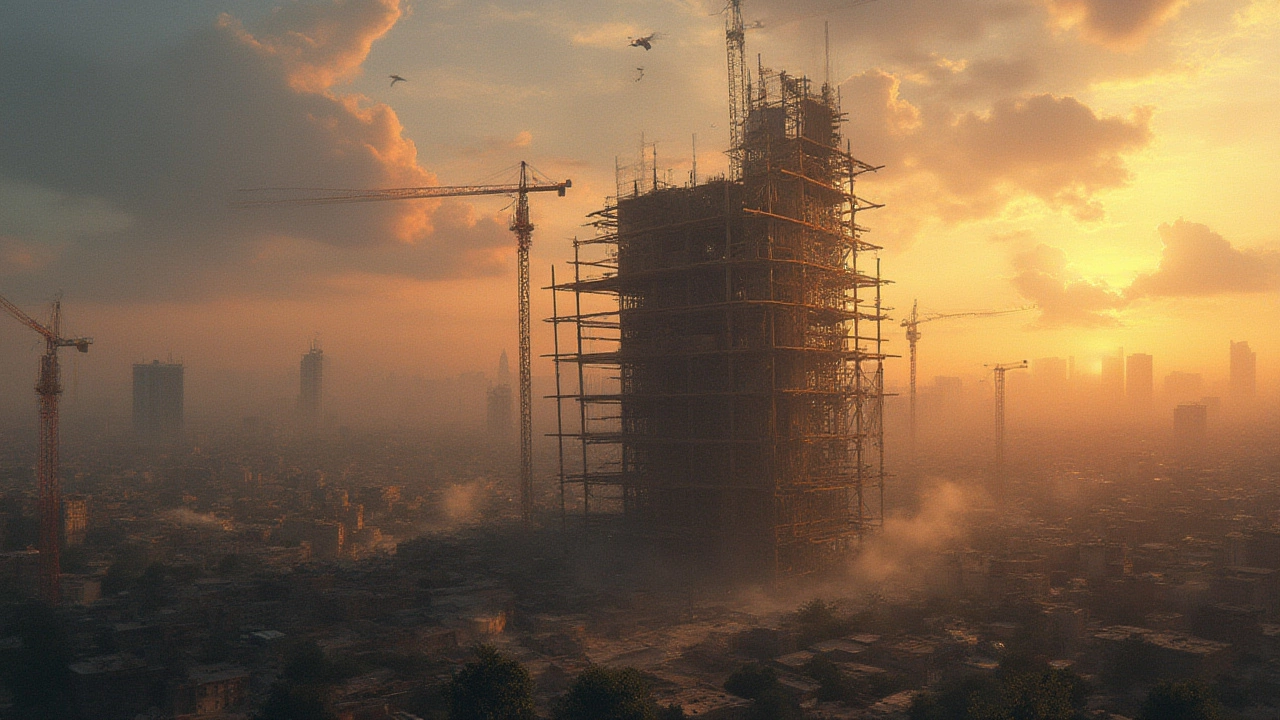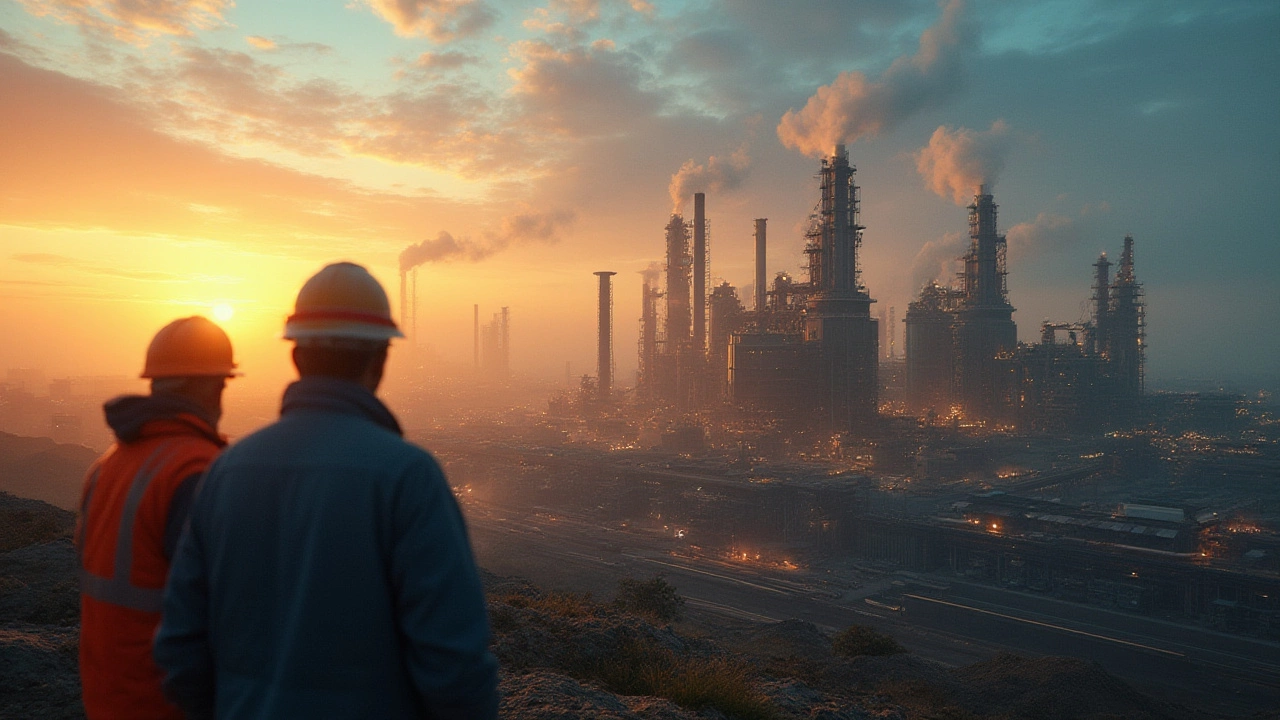Ever looked at a city skyline and thought about what’s literally holding it up? Steel. There’s more of it running through the world’s bridges, buildings, and cars than most people ever imagine. But what’s wild is the story behind who actually controls this backbone of modern life. Forget slow business—this market moves with the speed of a million construction cranes and it isn’t just about raw output. It’s about national pride, economic power, and survival of the fittest. Whether you imagined steelmaking as men pouring molten metal in dirty aprons, or giant silent factories run by robots, the real power players are global giants managing billions in investment and outmaneuvering rivals across borders.
The Biggest Players: Steel Titans of the World
If you want to know who truly dominates the steel industry, start with the sheer numbers. China isn’t just on the scoreboard; it’s playing its own game. Back in 2024, China produced a staggering 1.01 billion metric tons, accounting for over half of all the steel made worldwide. To put it in perspective, that’s more steel than the next top seven countries combined. The largest Chinese steelmaker, China Baowu Steel Group, leads the pack with over 130 million tons a year, holding the global crown since 2020. Right behind is ArcelorMittal—a Luxembourg-based beast with deep Indian roots, which is the undisputed titan outside China. ArcelorMittal churned out roughly 69 million tons last year, leveraging plants scattered from Europe to the Americas, Africa, and India.
Japan, once the kingpin post-World War II, still has its heavyweight—Nippon Steel—producing north of 45 million tons annually. India’s Steel Authority of India Limited (SAIL) and Tata Steel are fast risers, not just in output, but in cutting-edge processes and export markets. South Korea’s POSCO is a key global innovator, widely respected for super-efficient mills and premium grades. All these names mean one thing: if you see a major construction, a new railway, or even a fancy new electric vehicle on the road, odds are the steel is stamped by one of these giants.
But there’s something most overlook: dominance doesn’t just come from pouring out more steel. The top companies also control alloys, advanced coatings, and even recycling tech, shaping trends in how steel is used and what tomorrow’s engineering will look like. Kick-starting hydrogen-based steelmaking or crafting ultra-lightweight steel for EVs—these are the new battlegrounds for steel’s superpowers.
Geopolitics and Power: Steel as a Strategic Weapon
Think steel is just about construction? Think again. Nations see it as a strategic asset. China’s grip isn’t just due to cheap labor. The Chinese government pours massive investment into steel to support everything from local jobs to strategic projects like the Belt and Road Initiative. China Baowu, Ansteel, and Shagang are all state-influenced, and they often merge or restructure to squeeze out efficiency. This creates shockwaves globally whenever China tweaks its exports or production. So, if China decides to flood the world with excess steel, prices plunge everywhere. When Beijing clamps down on pollution and curbs output, costs skyrockets for builders in Europe and India.
In the US, steel’s political too. Limited import quotas and tariffs have become routine strategies to shield domestic manufacturers like United States Steel Corporation and Nucor. Washington points to national security every time a new policy pops up (the Section 232 tariffs made headlines even in 2024). The European Union takes a similar line, with so-called ‘trade defense measures’ popping in from time to time to stop Chinese or Turkish steel from swamping local businesses.
The Middle East is another wild card. Nations flush with petrodollars, like Saudi Arabia and the United Arab Emirates, have invested heavily in steel plants meant not just for local infrastructure but for export to Africa and Asia. It’s a reminder: big steel means big clout. Where steel goes, jobs and influence follow.

Technology, Sustainability, and the Race for Green Steel
Old-school steel used to mean smoke, heat, and colossal carbon emissions. Steel accounts for 7–8% of global CO2 output, making it the dirtiest industrial sector outside power generation. But that’s changing lightning fast. European firms, led by ArcelorMittal and Sweden’s SSAB, are pushing hydrogen-based and electric-arc furnace technology to wipe out most emissions by 2030. The world’s first ‘fossil-free’ steel deliveries started rolling out to Volvo in 2023, and the trend only picked up speed through 2025. Toyota, GM, and Tesla are all sniffing out suppliers who can guarantee green steel so they can sell low-carbon cars.
Even in India and China, the government has rolled out strict energy-efficiency laws. Most top producers have signed climate pledges to hit ‘Net Zero’ by 2050. This comes with tough challenges, since steelmaking relies on coking coal and mountain-sized furnaces that can’t just be swapped for electric ones overnight. Yet companies like Tata Steel are running pilot plans with hydrogen and carbon capture, and Japan’s JFE Steel has trialed using zero-carbon ammonia as a tapping agent in its blast furnaces. It isn’t just about feeling good—there are huge perks for the first to crack the green code, including premium pricing, investment from ESG funds, and government subsidies.
If you run a manufacturing shop or construct buildings, pay attention. Top buyers are now asking not just for strong steel, but for its carbon footprint. Companies that adapt fast can charge more, win contracts, and even get government support for expansion. That’s leading to a real shakeup, where older mills either turn green or slip down the ladder fast.
The Money Game: Profits, Mergers, and Competition
If you want insight into power in the steel world, don’t just count tons—follow the money and the merger trails. These days, being big is only half the game. Efficiency, location, and market access matter just as much. That’s why some giants, even if not always at the top for production, remain insanely profitable. ArcelorMittal, for one, runs slightly slimmer than it did in its bloated 2010s phase, but its profitability soared during steel booms, like after the COVID-era supply crunches. Chinese firms are restructuring almost yearly, following the central government’s cues. China Baowu itself is the result of dozens of state-guided mergers aiming to conquer inefficiency.
The United States saw a flurry of buyouts as well—Nucor, Cleveland-Cliffs, and U.S. Steel snapped up rivals or retooled mills to tap new supply chains. It’s not uncommon for big plants to swap owners, from investment groups to multinational giants, as competition heats up. In India, Tata Steel’s aggressive expansion into Europe and Southeast Asia made it more global than ever, while Jindal Steel and SAIL doubled down on domestic growth, betting on government-backed infrastructure drives. South Korea’s POSCO quietly snapped up mining stakes to reduce dependency on pricey raw material imports—which massively boosts profits when ore markets go wild.
Want a tip? Watch which companies manage supply in times of volatility. Those who hedge material costs and lock down long-term contracts tend to weather the storms best. Smaller players often get squeezed when prices swing, while the big fish, with their bankers and consultants, ride out every wave and come back even bigger. This isn’t just Wall Street boardroom drama—it affects how much you’ll pay for a new car or even an apartment next year.

The Future: Disruptors, Digital, and Emerging Champions
The steel industry may look ancient from the outside, but it’s getting disrupted just like Silicon Valley. Automation now runs many high-end rolling mills with fewer accidents and razor-sharp precision. Digital twins and AI-driven process control are slashing waste and forecasting errors. India, Vietnam, and Indonesia are the ones to watch—these countries are where steel consumption is shooting up as millions move into cities, demanding highways, towers, and metros. Vietnam’s Hoa Phat Group, for example, is one of Southeast Asia’s fastest-growing producers, and Indonesian steel output has nearly doubled in just three years.
Yet, it’s not always a young upstart that wins. The big guys—once they see a tech threat—usually roll out their own better, faster version and snap back to the top. But history shows the industry is full of surprises: who would’ve guessed ten years ago that the world’s largest steel company would be Chinese, or that India’s Tata Steel would become a European heavyweight? Keep an eye on recycling too—scrap-based electric furnaces are now key in circular economies, and any plant with strong local scrap access could pop up as the next profit center.
What should you watch for if you’re betting on steel? If you’re an investor or just plain interested, zero in on who’s betting big on automation, green tech, and novel alloys. Whoever nails these first has a shot at jumping up the rankings—and with steel making up the bones of every modern industry, that’s a lot of impact. This industry doesn’t just keep growing, it reinvents itself, but one thing endures: from ultra-modern skyscrapers to your neighborhood bridge, the world’s backbone is still steel—and the fight to control it is fiercer than ever. The next two decades promise even more shifts, and it’s never just about who smelts the most, but who adapts, invests, and innovates at breakneck speed.
